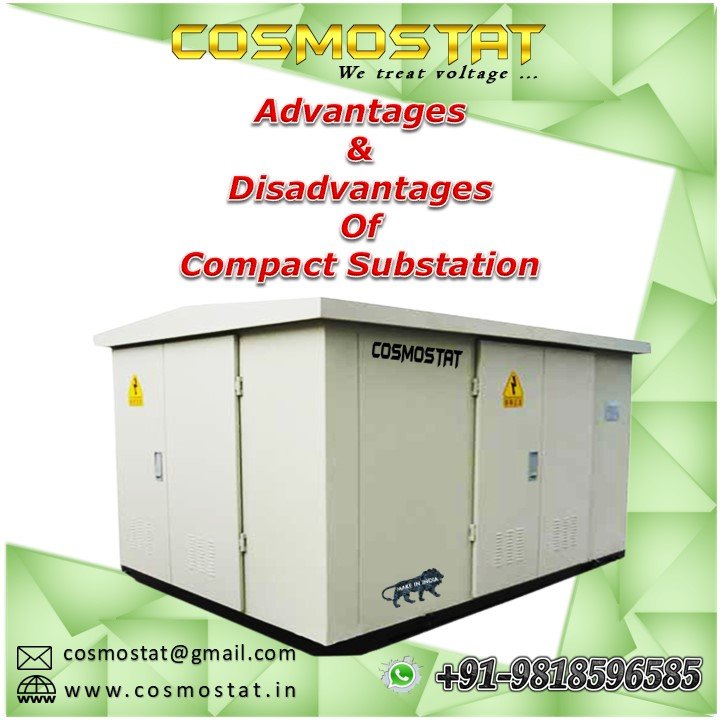
Here are some advantages and disadvantages of compact substations:
Advantages:
- Space-saving design
- Reduced installation time and costs
- Enhanced safety features
- Reliable and efficient operation
- Suitable for a wide range of applications
- Customizable to specific requirements
- Easy to transport and relocate
- Reduced environmental impact
- Quick installation and commissioning process
- Reduced civil works and site preparation requirements
- Improved aesthetic appearance and integration into urban areas
- Lower distribution losses due to reduced distances between transformers and loads
- Suitable for remote or space-constrained locations
- Modular design allows for easy expansion or relocation if needed
- Improved security and protection against vandalism or unauthorized access
- Enhanced monitoring and control capabilities with advanced digital technologies
- Increased reliability and reduced downtime due to localized power distribution
- Enhanced voltage control and stability for improved equipment performance
- Reduced transmission losses and improved energy efficiency
- Potential for integration with renewable energy sources or energy storage systems
- Faster fault detection and isolation for improved system protection
- Reduced environmental footprint and land requirements compared to conventional substations
- Compliance with industry standards and regulations for safety and performance
- Potential for modular design and standardized components, allowing for faster deployment and cost savings in large-scale projects
Disadvantages:
- Limited space for expansion
- Higher initial cost compared to conventional substations
- Maintenance may be more difficult due to the compact design
- Limited flexibility for configuration changes
- May require special equipment for installation and maintenance
- May not be suitable for large-scale power distribution systems
- Limited capacity compared to larger conventional substations
- Higher initial capital investment due to specialized design and components
- Limited flexibility for future upgrades or changes in electrical system requirements
- Reduced accessibility for maintenance and repairs, requiring specialized equipment or procedures
- Potential heat dissipation challenges in compact spaces, requiring additional cooling mechanisms
- Limited availability of standardized designs, resulting in longer lead times for custom configurations
- Potential for increased noise levels due to compact layout and limited sound insulation options
- Limited capacity for high-power applications or heavy industrial loads
- Challenges in accommodating future load growth and expanding capacity
- Higher vulnerability to equipment failure or damage due to limited redundancy options
- Potential constraints in interconnecting with existing infrastructure or grid networks
- Limited flexibility in choosing equipment suppliers or manufacturers due to specialized design requirements
- Higher risk of overheating or thermal limitations in compact spaces, requiring careful thermal management
- Challenges in accommodating complex or specialized equipment configurations or layouts
As with any engineering decision, it's important to conduct a thorough assessment of project requirements, constraints, and trade-offs to determine the suitability of a compact substation for a specific application.
